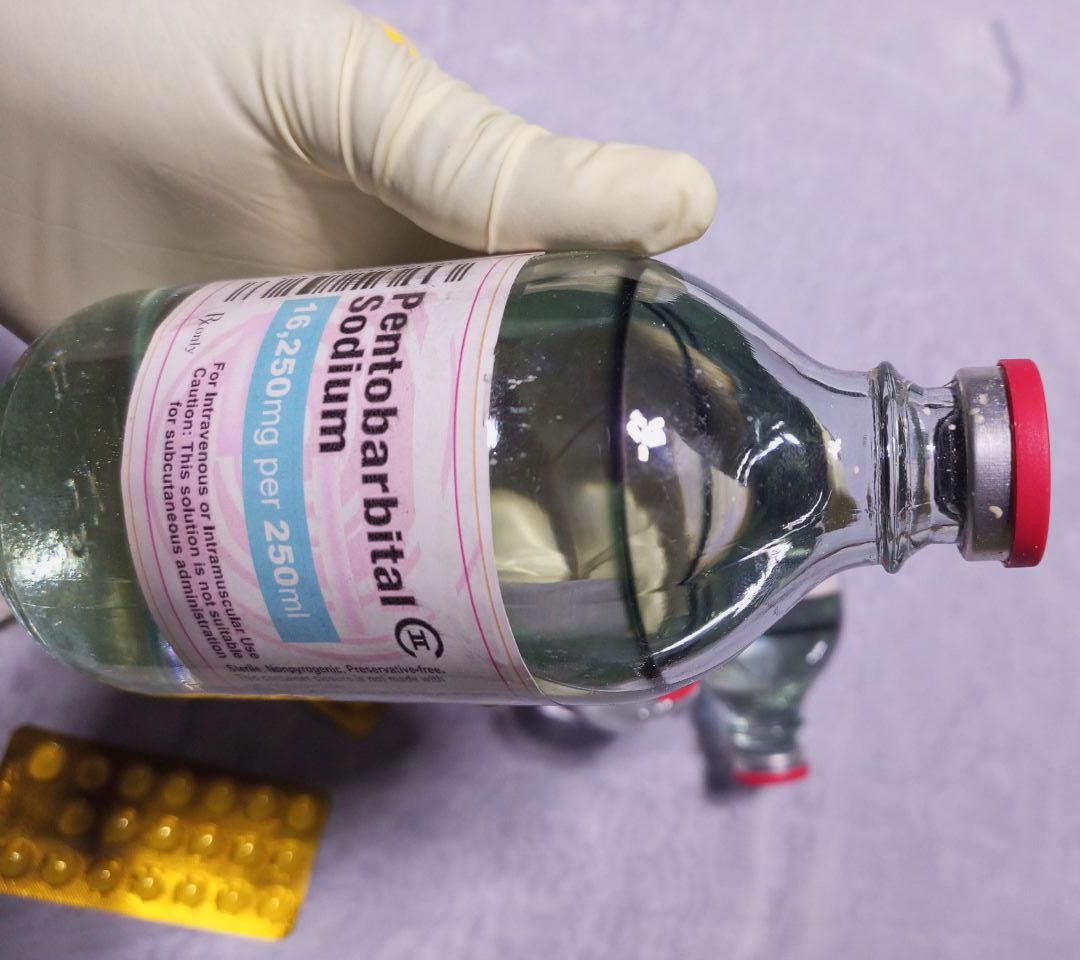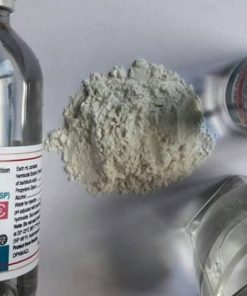Understanding Sodium Pentobarbital Uses: Comprehensive Guide
Sodium pentobarbital, a powerful barbiturate, plays a significant role in various medical and veterinary applications. This guide delves into its multifaceted sodium pentobarbital uses,
Uncovering Sodium Pentobarbital’s Applications
If your a healthcare professional, a veterinarian, or simply curious, a quick answer your questions about sodium pentobarbital uses, effects, and regulatory aspects.
What is Sodium Pentobarbital?
Sodium pentobarbital is a barbiturate derivative, primarily used for its sedative and anesthetic properties.

Chemical Composition and Structure
- Chemical formula: C11H17N2O3Na
- Molecular weight: 248.26 g/mol
- Appearance: White, crystalline powder
Key takeaway: Sodium pentobarbital is a barbiturate known for its strong sedative effects, utilized in both human and veterinary medicine.
Medical Uses of Sodium Pentobarbital
Sodium pentobarbital is employed in various medical scenarios due to its reliable sedative properties.

Anesthesia
Sodium pentobarbital is used as an anesthetic in specific medical procedures.
- Short-duration surgeries
- Diagnostic procedures
- Minor invasive treatments
Key takeaway: Its fast-acting nature makes it ideal for procedures requiring brief and controlled anesthesia.
Sedation for Severe Insomnia
For patients with severe, intractable insomnia, sodium pentobarbital can be an effective treatment.
- Rapid onset of sleep
- Sustained sleep duration
Key takeaway: Sodium pentobarbital is potent in managing severe insomnia but is typically reserved for cases where other treatments have failed.
Veterinary Applications of Sodium Pentobarbital
In veterinary medicine, sodium pentobarbital is a crucial tool for various treatments and procedures.
Euthanasia
One of the most common uses of sodium pentobarbital in veterinary practice is humane euthanasia.
- Rapid and painless procedure
- High reliability
Key takeaway: Sodium pentobarbital ensures a humane and painless euthanasia process for animals, providing a peaceful end-of-life solution.

Anesthesia in Veterinary Surgery
Sodium pentobarbital is also used as an anesthetic in animal surgeries.
- Effective sedation
- Controlled anesthesia depth
Mechanism of Action
Understanding how sodium pentobarbital works is crucial for its effective application.
Interaction with GABA Receptors
Sodium pentobarbital enhances the activity of GABA, an inhibitory neurotransmitter.
- Increased neuronal inhibition
- Sedative effects
Dose-Dependent Effects
The effects of sodium pentobarbital vary with dosage.
- Low doses: Sedation and anxiolysis
- High doses: Anesthesia and potentially fatal respiratory depression
Administration Methods
Different methods of administering sodium pentobarbital are employed depending on the context.
Intravenous Injection
Commonly used in both human and veterinary medicine for rapid onset of effects.
- Immediate action
- Precise dosage control
Key takeaway: IV injection provides fast and controllable effects, making it suitable for critical procedures.
Oral Administration
Less common but used in certain scenarios.
- Slower onset
- Variable absorption
Key takeaway: Oral administration is less predictable but can be useful in non-emergency situations.
Side Effects and Risks
Like all potent drugs, sodium pentobarbital carries potential side effects and risks.
Common Side Effects
- Drowsiness
- Dizziness
- Nausea
Key takeaway: Awareness of common side effects helps manage patient expectations and ensures proper monitoring.
Severe Risks
High doses or improper use can lead to serious consequences.
- Respiratory depression
- Coma
- Death
Key takeaway: Strict adherence to dosing guidelines is essential to prevent life-threatening complications.

Legal and Ethical Considerations
The use of sodium pentobarbital is subject to strict regulations and ethical considerations.
Regulatory Status
Different countries have varying regulations regarding its use.
- Controlled substance
- Prescription-only
Key takeaway: Compliance with legal frameworks is necessary to ensure safe and lawful use.
Ethical Use in Euthanasia
Ethical considerations are paramount in euthanasia practices.
- Humane treatment
- Respect for animal life
Key takeaway: Ethical use ensures humane and respectful end-of-life care for animals.
Alternatives to Sodium Pentobarbital
Several alternatives exist for applications traditionally served by sodium pentobarbital.
Alternative Sedatives and Anesthetics
- Propofol
- Ketamine
- Midazolam
Key takeaway: Alternative drugs can be chosen based on specific clinical needs and patient conditions.
Non-Barbiturate Options
Newer, non-barbiturate options provide similar effects with potentially fewer side effects.
- Dexmedetomidine
- Etomidate
Key takeaway: Exploring non-barbiturate options can enhance patient safety and outcomes.
Sodium Pentobarbital in Research
Sodium pentobarbital is also used in various research settings.
Animal Studies
Widely used for sedation and euthanasia in laboratory animals.
- Controlled environment
- Standardized procedures
Key takeaway: Its reliability makes it a staple in research protocols.
Clinical Trials
Investigational use in clinical trials for new applications.
- Exploratory studies
- Dose-response assessments
Key takeaway: Clinical trials help expand the understanding and potential uses of sodium pentobarbital.
Best Practices for Sodium Pentobarbital Use
Adhering to best practices ensures safe and effective use of sodium pentobarbital.
Proper Dosing Guidelines
- Weight-based calculations
- Titration to effect
Key takeaway: Accurate dosing is vital for efficacy and safety.
Monitoring and Support
Continuous monitoring during administration is crucial.
- Vital signs monitoring
- Emergency preparedness
Key takeaway: Monitoring ensures early detection and management of adverse effects.
Conclusion: The Multifaceted Role of Sodium Pentobarbital
Sodium pentobarbital serves diverse roles in medicine and veterinary practice. Understanding its uses, mechanisms, and risks is essential for its effective and ethical application.
FAQs
What is sodium pentobarbital used for?
Sodium pentobarbital is used for anesthesia, sedation, and euthanasia in both human and veterinary medicine.
How does sodium pentobarbital work?
It enhances GABA activity, leading to increased neuronal inhibition and resulting in sedation and anesthesia.
What are the side effects of sodium pentobarbital?
Common side effects include drowsiness, dizziness, and nausea. Severe risks include respiratory depression and coma.
How is sodium pentobarbital administered?
It can be administered via intravenous injection or orally, with IV injection being the most common method.
Is sodium pentobarbital legal?
Yes, but it is a controlled substance and requires a prescription for use.
Are there alternatives to sodium pentobarbital?
Yes, alternatives include propofol, ketamine, midazolam, dexmedetomidine, and etomidate.
What are the ethical considerations for using sodium pentobarbital in euthanasia?
Ensuring humane and respectful treatment of animals is paramount in ethical euthanasia practices.
How is sodium pentobarbital used in research?
It is commonly used for sedation and euthanasia in animal studies and investigational uses in clinical trials.

 Deutsch
Deutsch Español
Español Français
Français Italiano
Italiano Русский
Русский Nederlands
Nederlands Polski
Polski Türkçe
Türkçe
